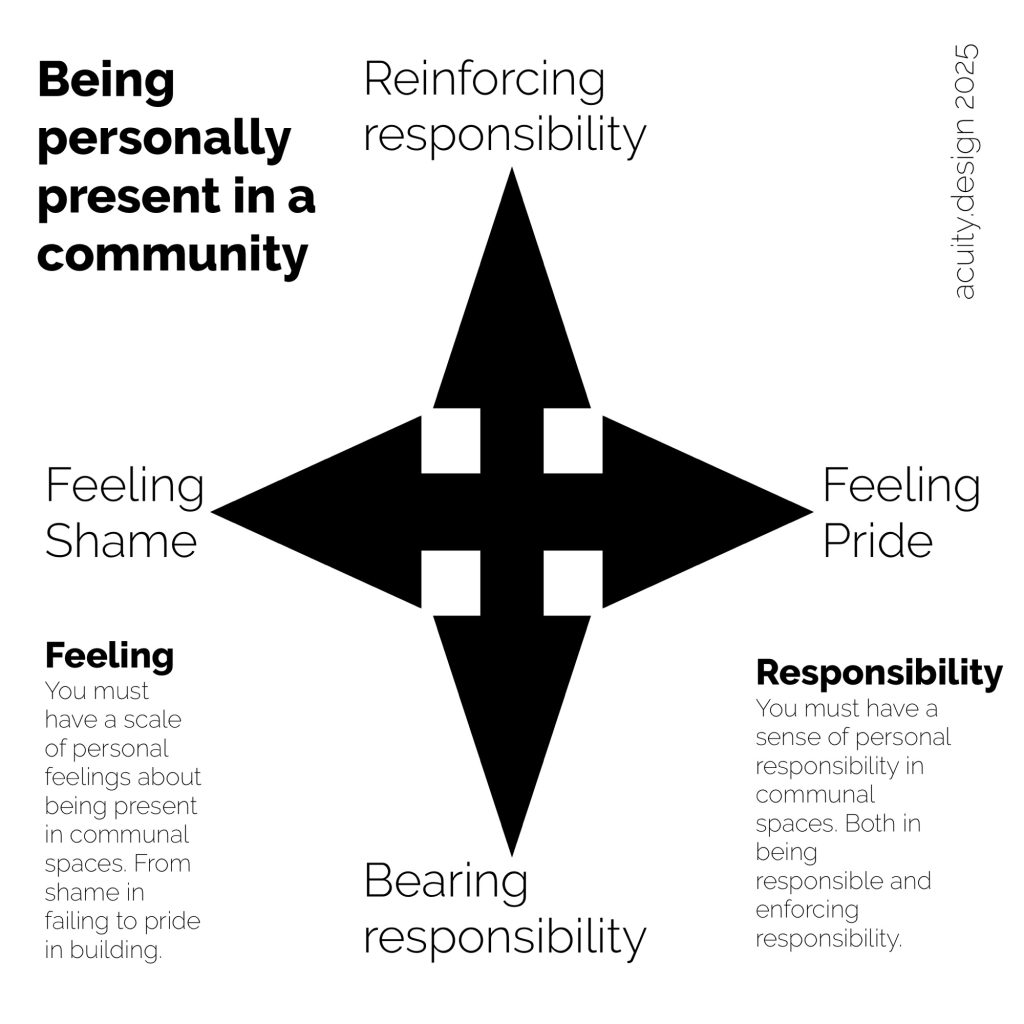A UK party is offering a policy idea of fining people for use of mobile devices playing audio on public transport without headphones.
This makes me wonder about what being personally present in a community means.
I am reminded of meta-cognition skills ideas around Confidence and Certainty (a contextual shifting around of Under and Over).

The diagram above is just a model for thinking about a couple of ways in which individuals are present in a community, in a physical space with other people.
There are a lot of issues around this kind of model. As with meta-cognition there are biases around privilege, power, history, age and cultural background.
In terms of the headphones on public transport issues, there are a few angles of discussion.
- Do people have any feeling of shame about playing sound and annoying other people? Are they aware of being in a community at all?
- Who attempts to reinforce the responsibilities of other individuals to a community? Who tells a person that their behaviour is anti-social? Is it purely authorised staff, the local ‘busybody’ or just anyone?
- Do people feel community pride in regular temporary public spaces like public transport? Is it theirs or is the institutions?
- How does communal sense of presence work in intersectional terms?
What I’m mostly interested in here is the under-discussed meaning of community.
The policy discussion is about use of institutional power against individual misbehaviour: it eradicates any sense of how people in a community feel and act.